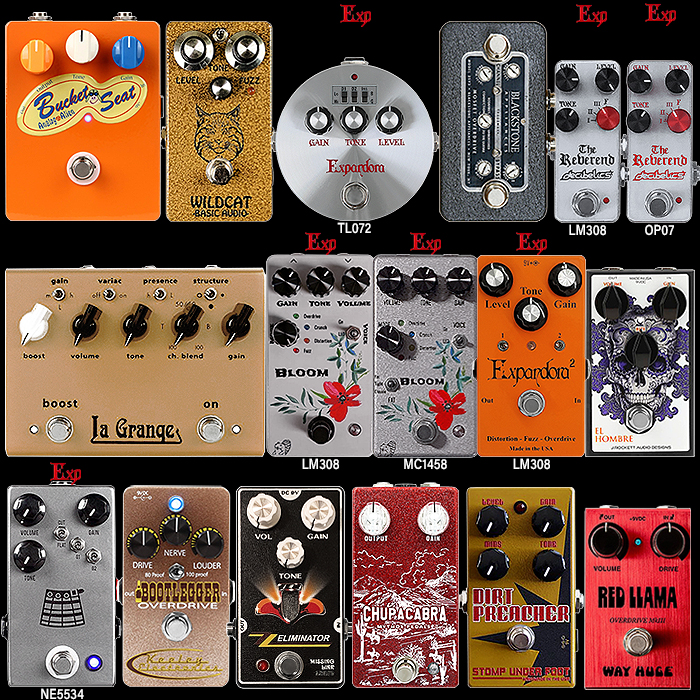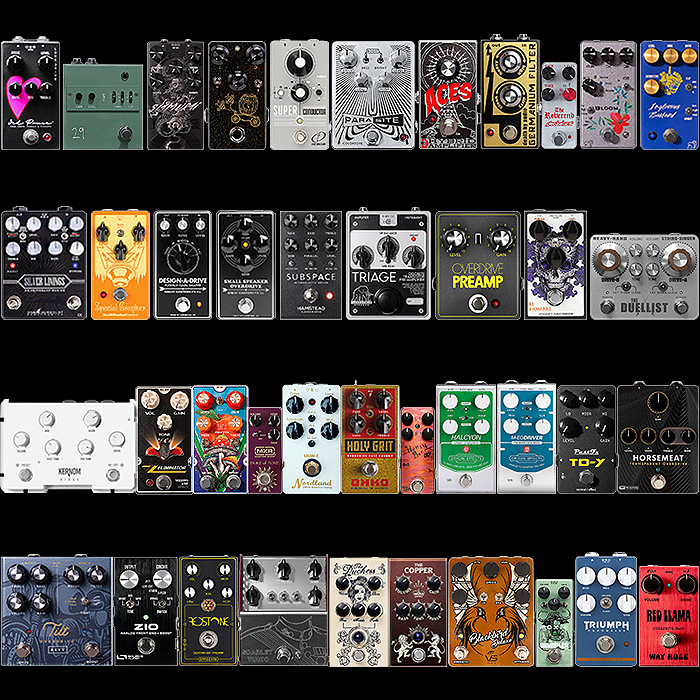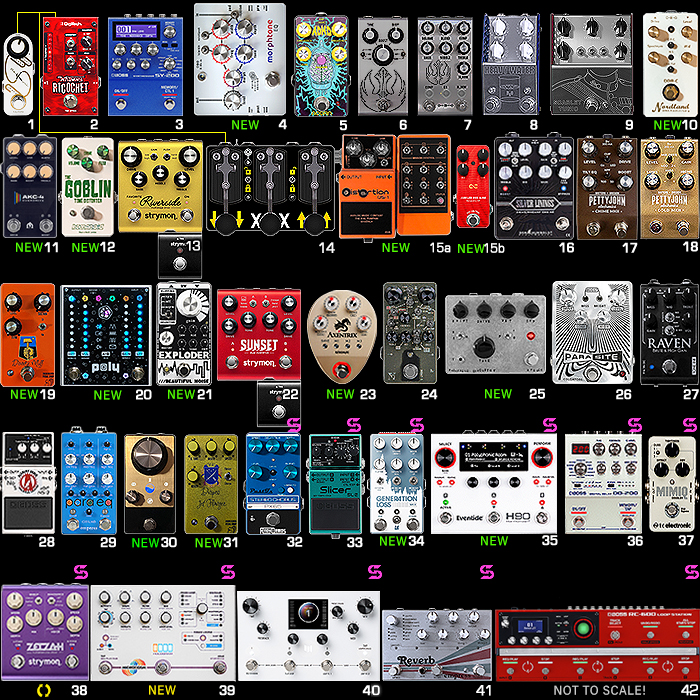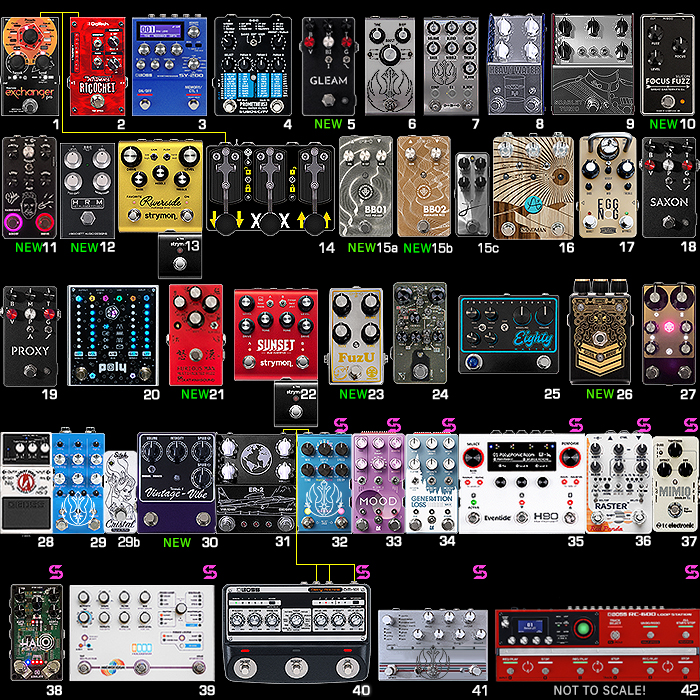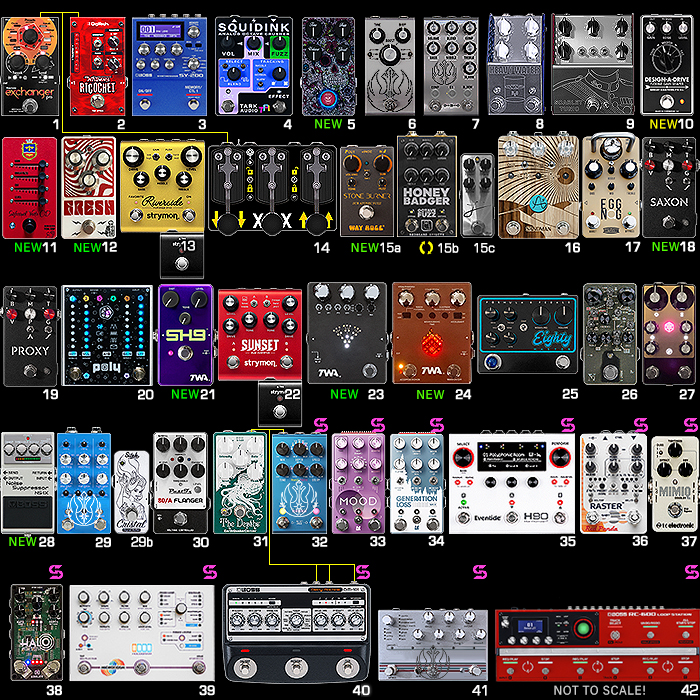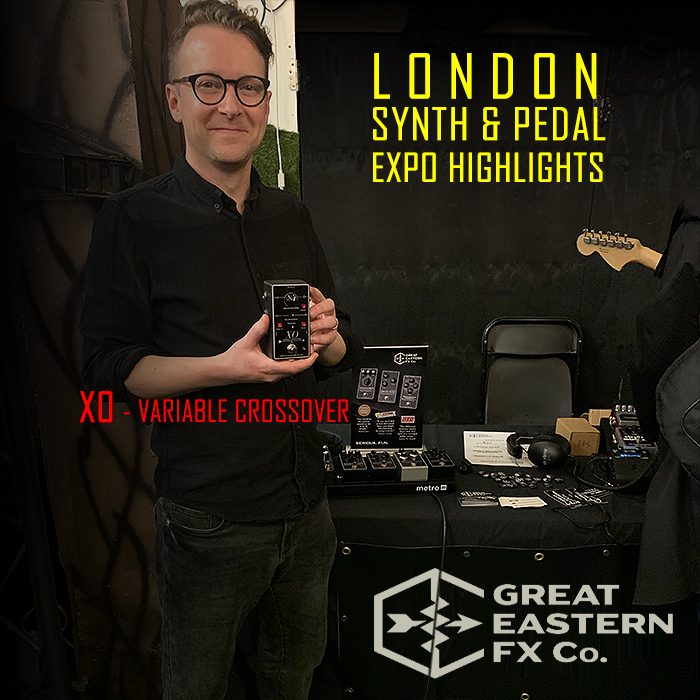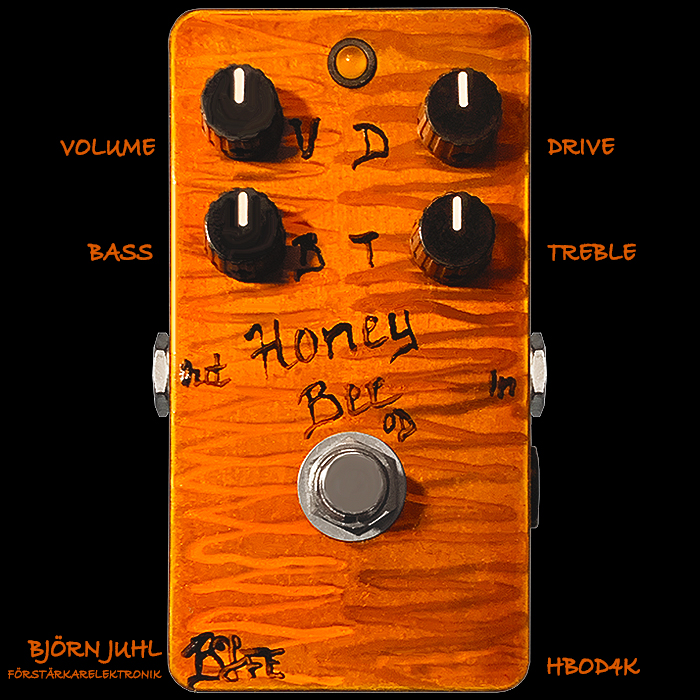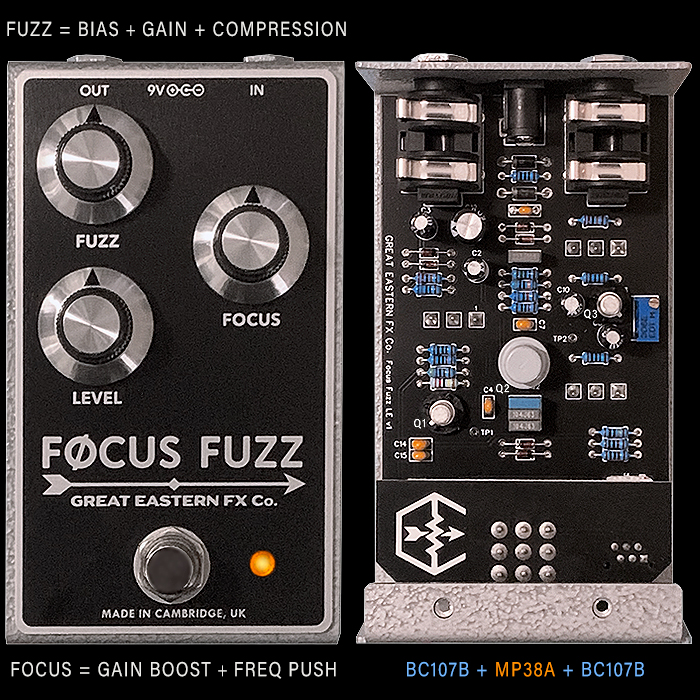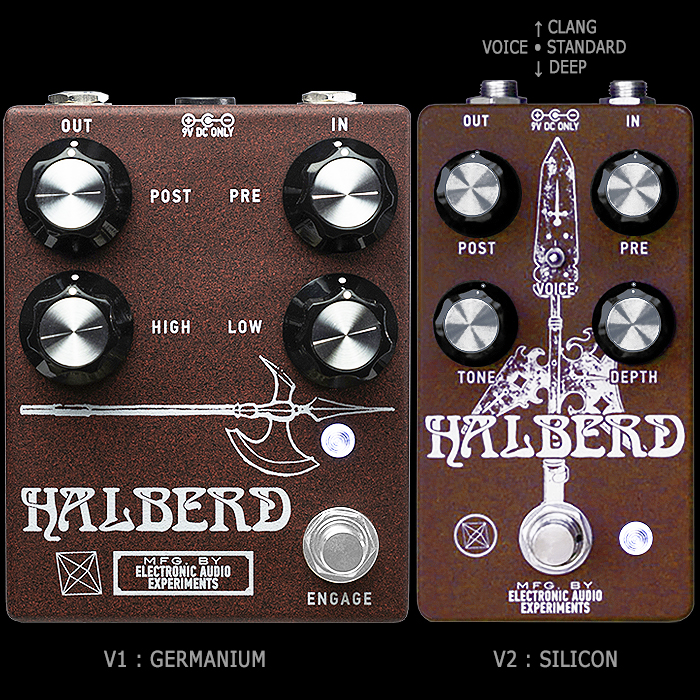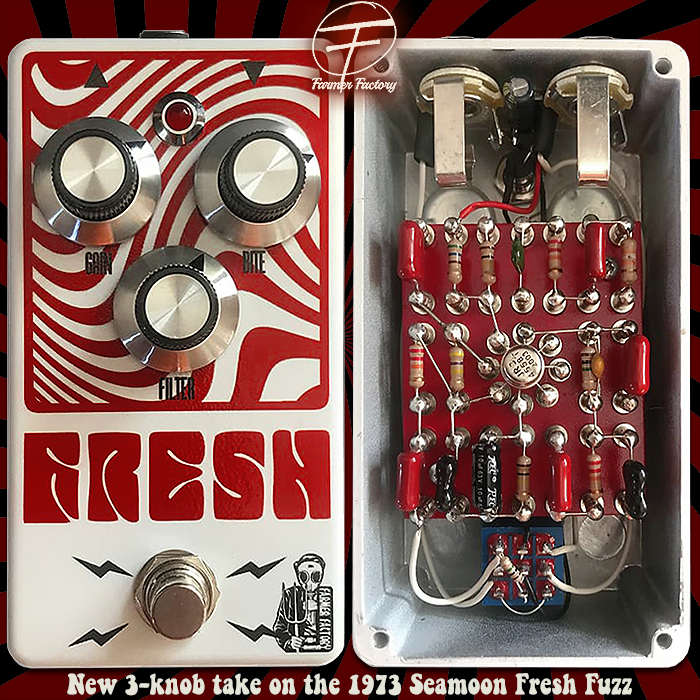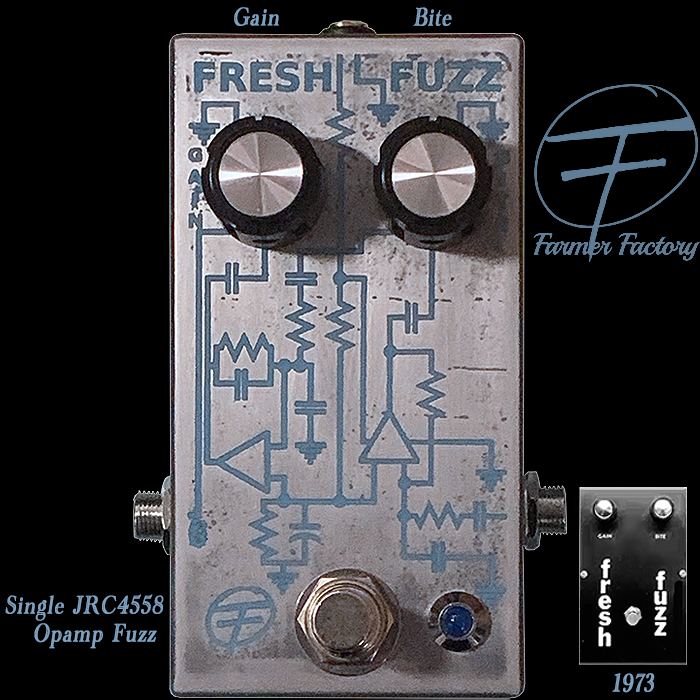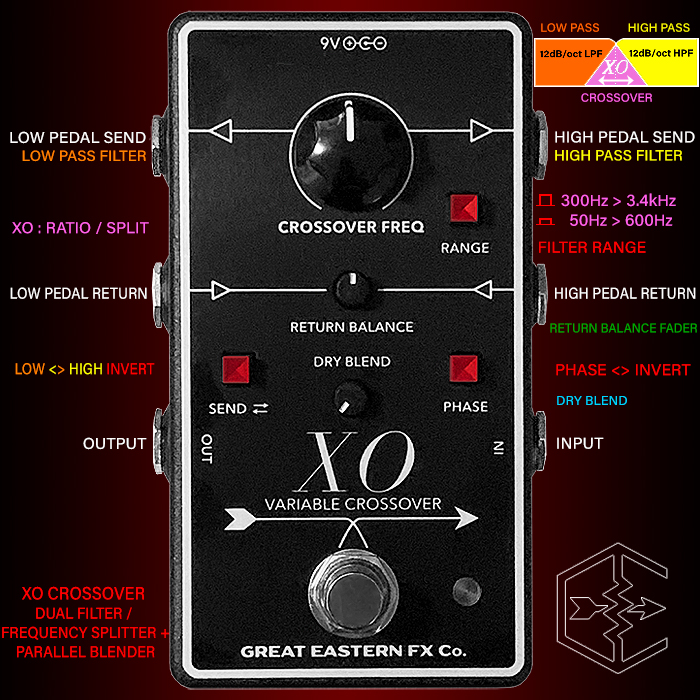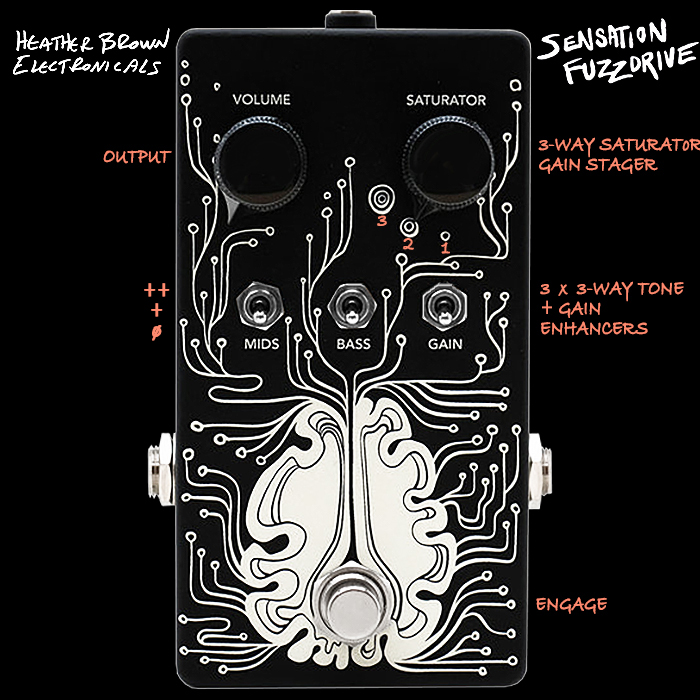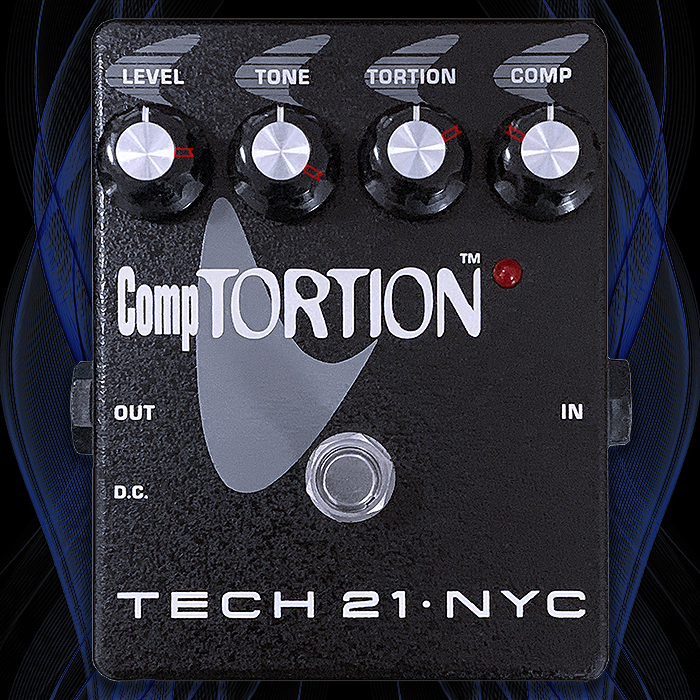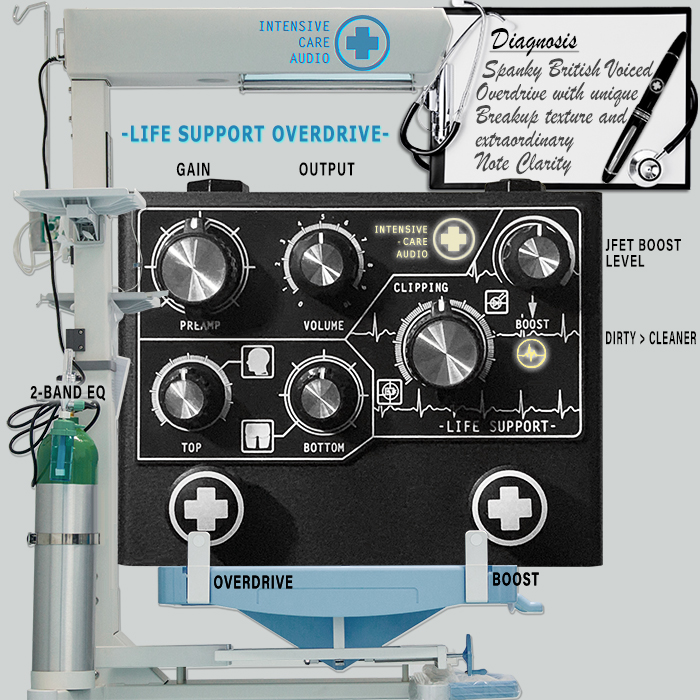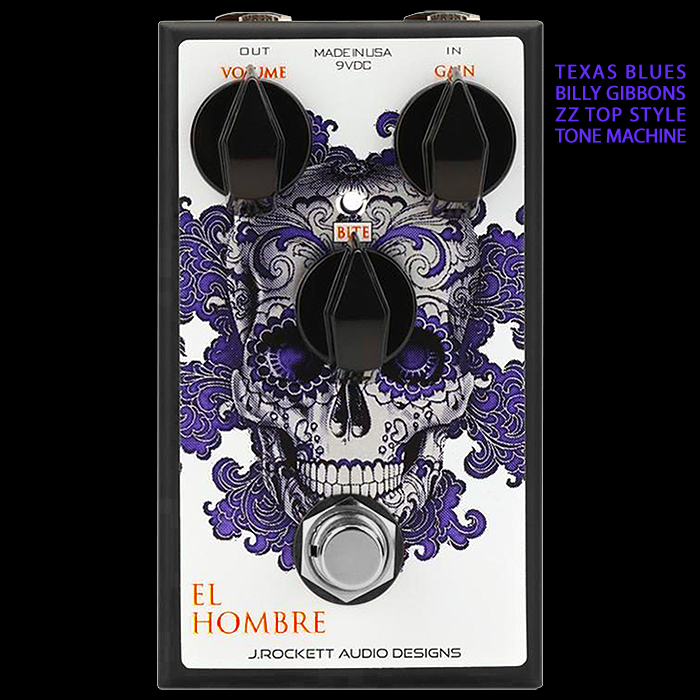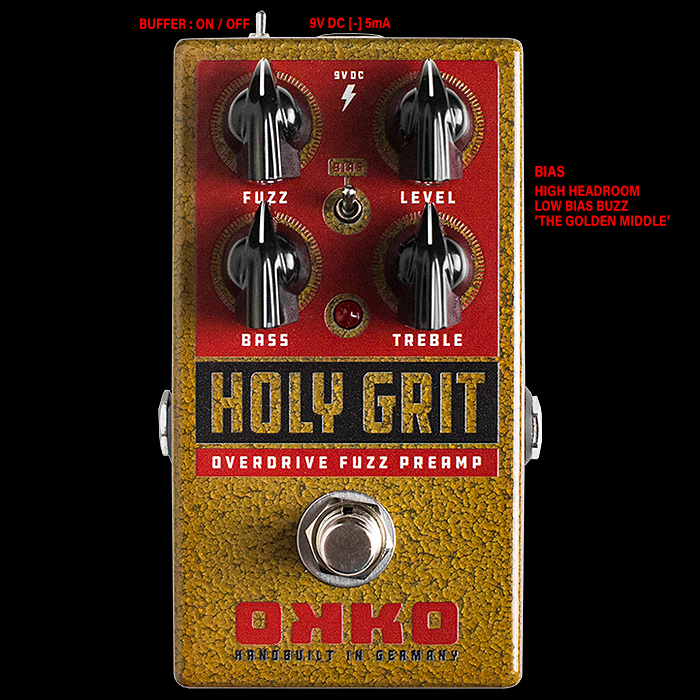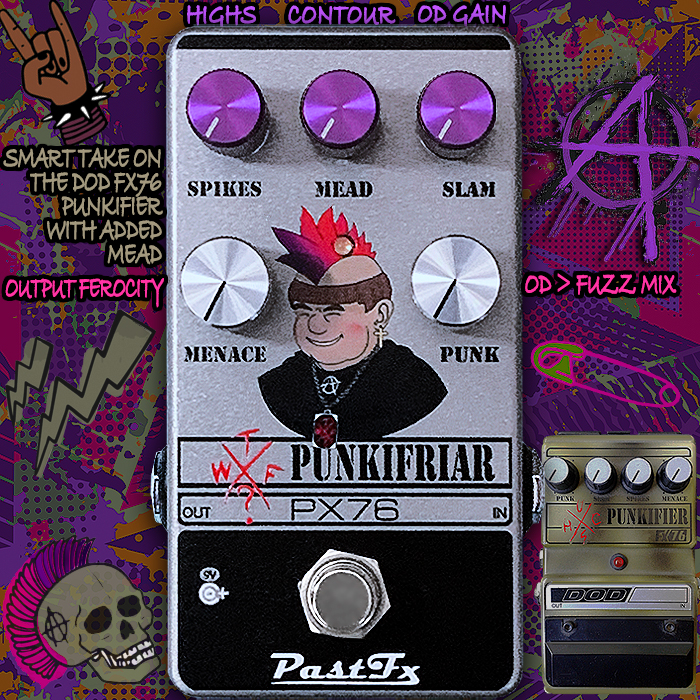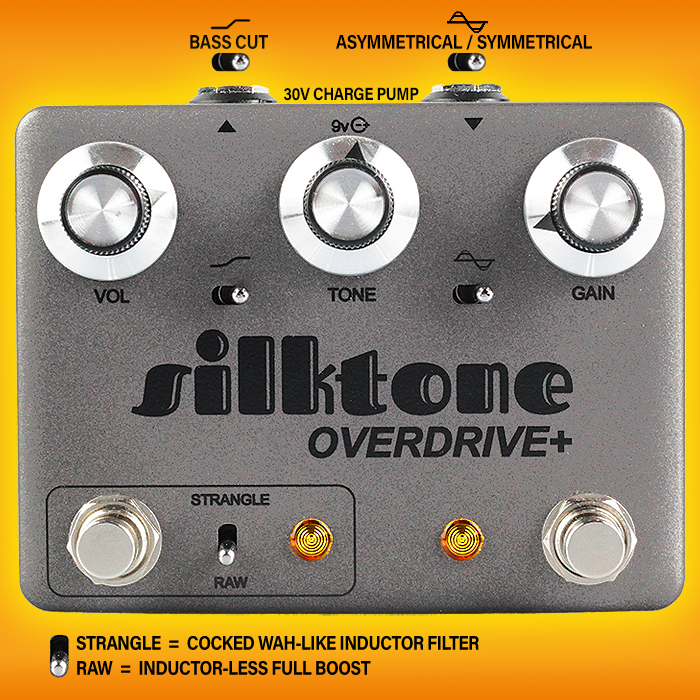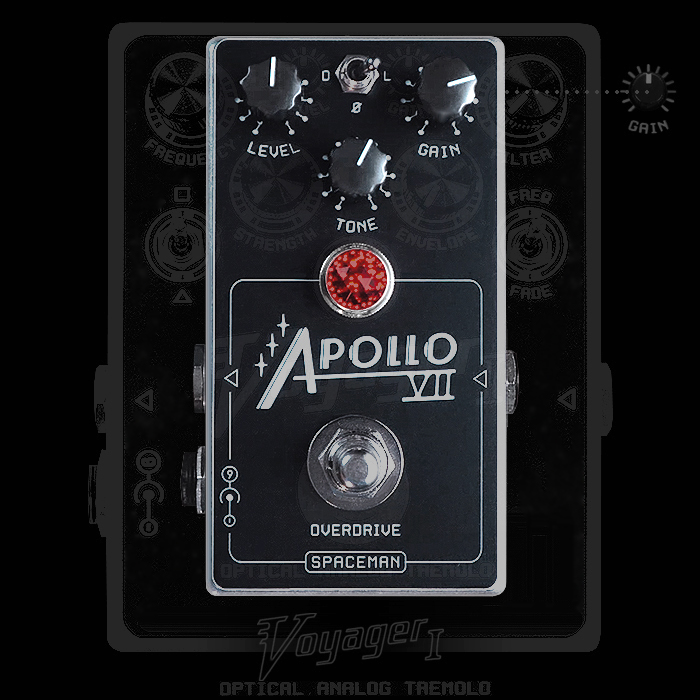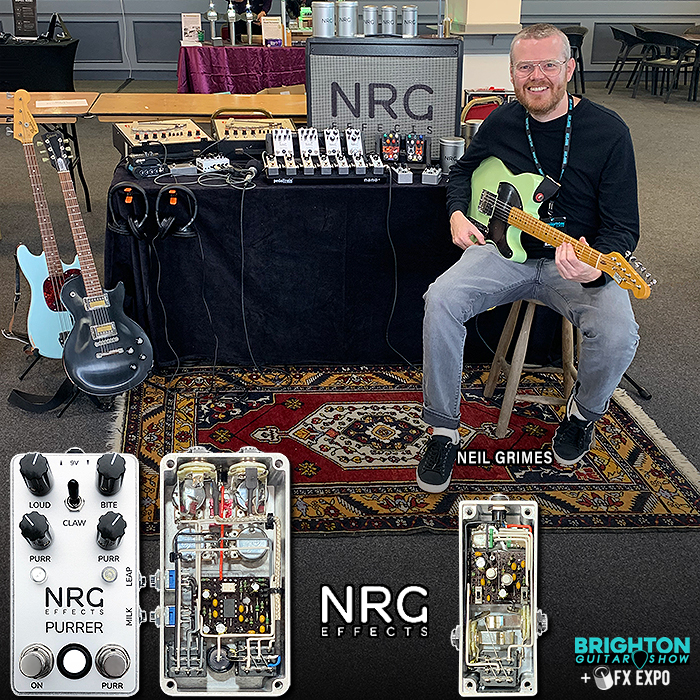A head-to-head Overview of the Great Eastern FX Small Speaker Overdrive vs its Design-A-Drive sibling
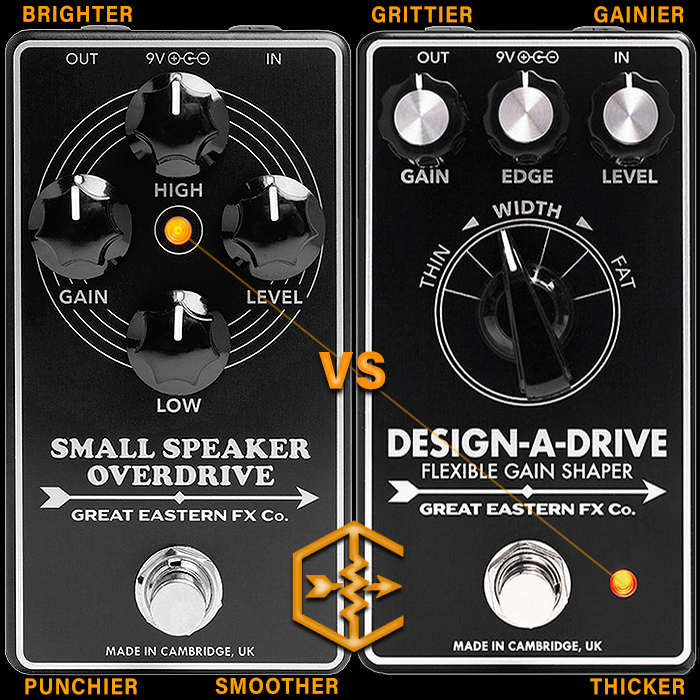
What we have on the surface here is two specialist 4-knob overdrives which in turn might lead some to believe that there was some degree of similarity between them, while that could not be further from the truth.
Each of David Greeves’ overdrives is infused with a certain flavour and character, where those two drives really could not be more different. You can match them for gain and level to a degree, but their EQ’s are quite different, and more importantly their core characters, textures and timbres are fairly strikingly different - so there really is no proper overlap here - these are very individual and distinct overdrive pedals.
Small Speaker Overdrive - £219
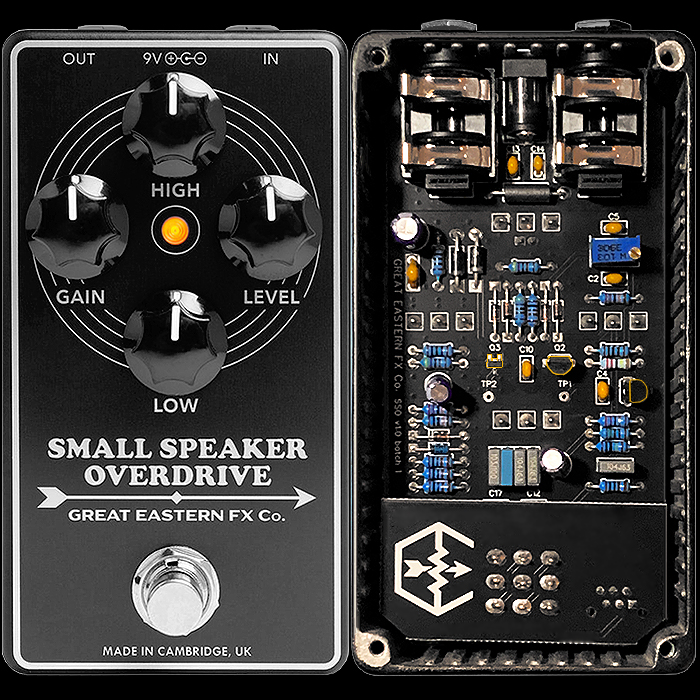
When thinking of terms to describe the sort of Fender Champ recorded tone inspired Small Speaker Overdrive - you think of smooth and refined with a proper small speaker style punchiness, and a lovely bright Fender-style top end. This pedal has a fully defined purpose and a sort of specific niche to fill as such - and it carries all that out with a measured predictability and evenness - with predictable linear tapers on each of its 4 dials.
Moreover the SSO has some beautiful playback dynamics in a fantastic responsiveness to picking dynamics manner with superior guitar volume cleanup - if you've grown up with those early 70's Eric Clapton, Duane Allman and Joe Walsh recordings et al - this should be very familiar territory for you! Note that David did not try to reconstruct the Fender Champ amp topology in transistor array format, rather he carefully and diligently matched the pedal's frequency profile and output characteristics to those legendary recordings - so that you can really sound like the mic'd up recorded amp that you're hearing on those recordings.
I tend to set the controls slightly higher than I need and then roll back the volume to deliver the different levels of gain - with all the appropriate EQ balance intact. Generally you need slightly more of everything than you would normally go for - as when you roll back your guitar volume each of those settings / outputs gets attenuated to a degree - so you need to have enough in the tank as such to work optimally and maintain the balance as you roll back the guitar volume.
For David Greeves - everything revolves around Frequency Response and Dynamics - those are the two yardsticks that inform all his work, and against which all his pedals will be judged. So besides the 4-knob thing - each of these pedals has its own evolved take on Frequency and Dynamics! In fact both those overdrives are hard-clippers too, with the clipping routed to ground.
While the SSO has somewhat superior cleanup dynamics to the Design-A-Drive, but you can use your guitar volume pretty well on both.
Preferred Settings for the SSO : Gain @ noon, High & Level @ 3 o'c, and Low @ 2 o'c.
You can of course order the Small Speaker Overdrive direct from the Great Eastern FX Webstore, as well as at leading dealers for £219 (inc. VAT) and equivalent.
Design-A-Drive - £229
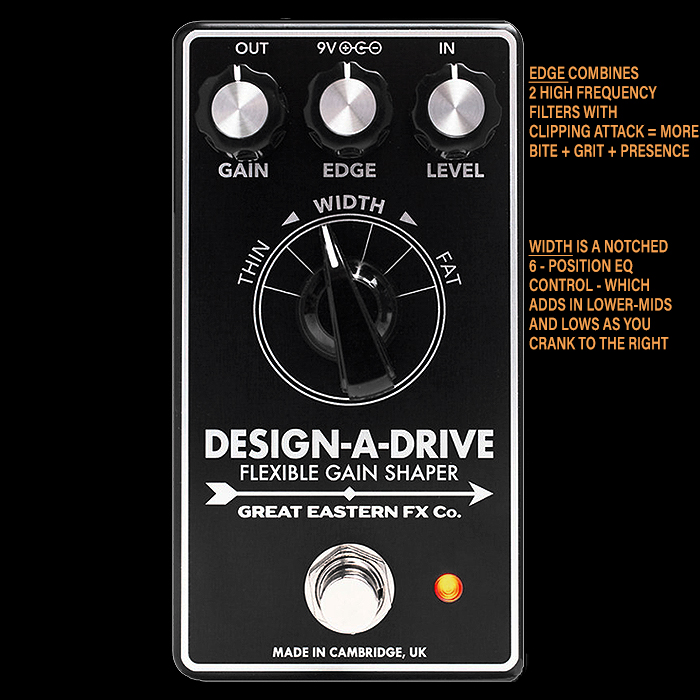
When listening to the Design-a-Drive - it's much rawer and grittier than the SSO - it has a sinewy wiry muscularity to it, and a definite fuzzy edge. It's kind of genre non-specific - but if you had to put your finger on some reference you would most likely say it was closest to the sound of early 80's garage rock. A little sleazy and dirty around the edges with that sort of insouciant attitude!
And compared to the SSO its two main EQ controls are not nearly so linear or predictable.
The Width control very much carries the weight figuratively and literally - in being a notched 6-position rotary which adjusts a few facets of the output at the same time. It mainly gradually adds in more lower mids, but some lows too, while at the same time adjusting the saturation so that you don't overload the output. On humbuckers this control is even pretty 'wide' at its narrowest / thinnest extreme - where I mostly have it on Notch 1 or 2. And if I go much beyond Notch 3 it starts to sound somewhat bloated. For Single Coil guitars you would likely be operating more on the Fat side of Width. While as mentioned for humbuckers - it's already pretty 'wide' at its Thinnest extreme.
The Edge control applies two different filters aimed at the higher frequencies - and adds Brightness, Bite and Sizzle / Saturation up to a certain point (around 3 o'c for me) - while diming that control loads in additional compression which can ameliorate the sharpness slightly FCW. So like myself and Pete Thorn - you will probably find the most brightness and bite between circa 1 o'c and 3 o'c - thereafter you get more saturation and compression - while the Brightness rolls back off too.
David explains a scenario where a band has fully set up and just completed its soundcheck in a mostly empty room. Then during the live performance with the premises now filled to the brim - the overdrive is no longer sounding optimal - you could actually do with a little less in the low end, and a little more cutting through the band mix - which means notching up the Edge control slightly and notching the Width control down 1 step typically.
This is really the essence of the Design-a-Drive - not really as some kind of modular sound design tool - but its ability to rapidly and easily adjust its profile to suit a certain playback scenarios. Sheryl Crow's guitarist Peter Stroud famously uses the Design-A-Drive in his rig, where it covers a fairly wide palette of country and heartland rock, folk, blues and even some poppier material. And Dan Hawkins of the Darkness is another who makes great use of the DAD on his touring board - where easily covers classic rock and harder tones too.
In some ways - and not at all intentionally - you could say that the more studio style sensibilities of the SSO mean that it's more suitable for studio recordings and home-playback. While the Design-A-Drive is more of a live arena style weapon of choice - with plenty of texture, edge and bite, to cut through the band mix at all times.
As the frequency profile of the Design-A-Drive is so much more complex - it's important to see the visualisation on how that's reacting to those 2 key EQ controls :

Preferred Settings : Gain @ noon, Edge at c. 2 o'c, Level @ 3 o'c, Width @ 2nd notch!
You can acquire the Design-A-Drive direct from the Great Eastern FX Webstore, as well as at leading dealers for £229 (inc. VAT) and equivalent.



















